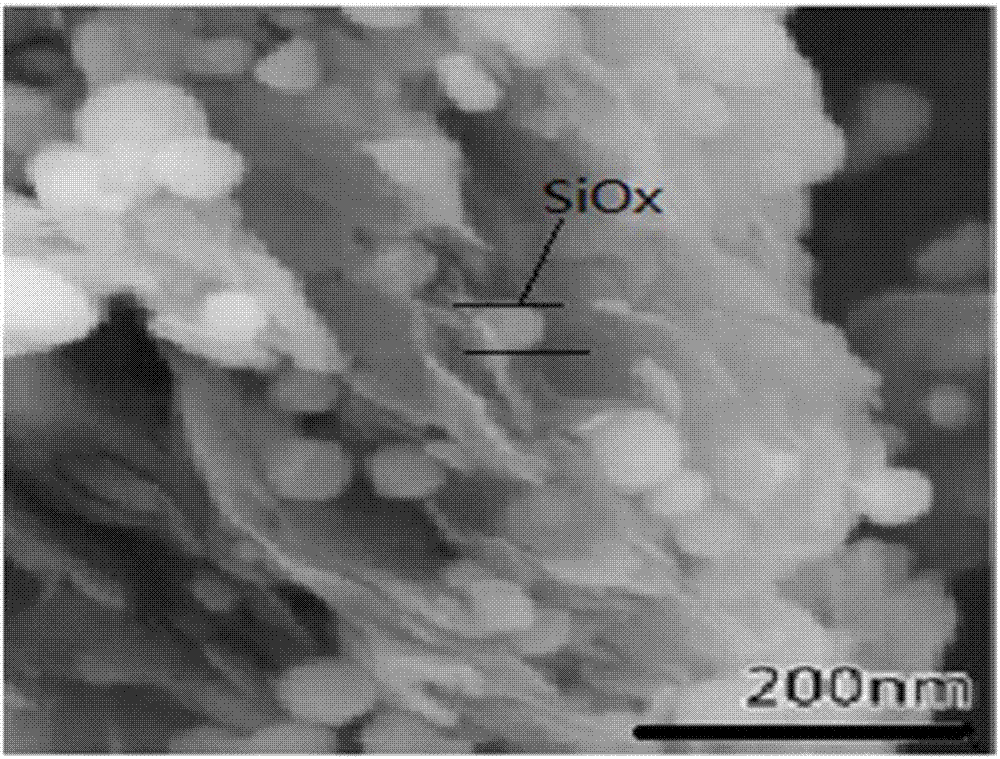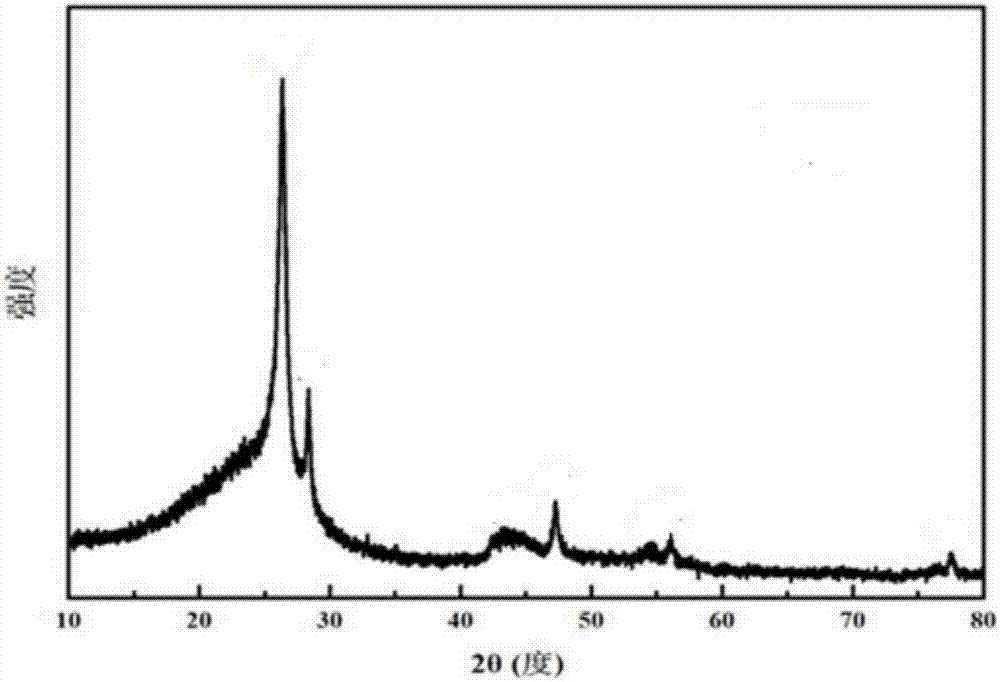Lithium ion battery silicon oxide and carbon composite negative pole material and preparation method thereof
A lithium ion battery, silicon oxide technology, applied in battery electrodes, secondary batteries, electrochemical generators, etc., can solve the problems of high preparation cost, prone to agglomeration, expensive raw materials, etc. The effect of interfacial potential energy and high specific capacity
- Summary
- Abstract
- Description
- Claims
- Application Information
AI Technical Summary
Problems solved by technology
Method used
Image
Examples
preparation example Construction
[0032] The preparation method of silicon oxide and carbon composite negative electrode material of lithium ion battery of the present invention comprises the following steps:
[0033] 1. Preparation of nano-silica sol
[0034] Under room temperature (20 ± 5 ℃), according to prior art preparation mass concentration is the alkaline aqueous solution of 5.0~20%, in alkaline aqueous solution, add the nonionic surface active agent that quality is alkaline aqueous solution 1.5~4.0%, control The rotation speed is 150-800r / min, after mechanically stirring the mixed solution for 25-55min, slowly add silicon tetrachloride under stirring, so as not to cause splashing and the mixed solution does not splash on the wall of the vessel where it is located, until the pH of the mixed solution is reached. The value is 6.5-7.5, continue to stir for 40-100 minutes, and then let stand for 2-8 hours to obtain nano-silica sol in a stable state.
[0035] The alkaline aqueous solution solute is more th...
Embodiment 1
[0067] 1. In 500g of sodium hydroxide aqueous solution with a mass concentration of 5.0%, add 7.5g of polyethylene glycol with a mass purity of 99% or more, control the rotation speed at 150r / min, and after mechanical stirring for 25min, slowly add tetrachloride under stirring Silica until the pH of the mixed solution is 6.5, continue to stir and react for 40 minutes, and then stand and age for 2 hours to obtain nano-silica sol in a stable state.
[0068] 2. Weigh the reducing agent zinc powder according to the molar ratio of metal zinc to silicon tetrachloride 0.5:1, mix it with spherical natural graphite powder at a mass ratio of 1:9, and place it in an ultrasonic reactor. Control the reactor at a temperature of 25°C and a speed of 800r / min, power density 0.45w / cm 2 , ultrasonically disperse for 30min at a frequency of 20KHz, disperse the mixed powder in absolute ethanol, configure a solution with a mass concentration of 35%, add nano-silica sol, continue ultrasonically dis...
Embodiment 2
[0076] 1. Add 10 g of fatty alcohol polyoxyethylene ether with a purity of 99% or more to 500 g of an aqueous solution of sodium carbonate with a mass concentration of 8.0%, control the speed at 280 r / min, and react with mechanical stirring for 31 min, then slowly add silicon tetrachloride under stirring to The pH value of the mixed solution was 6.5. After continuing to stir and react for 52 minutes, it was allowed to stand and age for 4 hours to obtain a stable nano-silica sol.
[0077] 2. Weigh the reducing agent zinc powder according to the molar ratio of metal zinc to silicon tetrachloride 0.65:1, mix it with the mesophase carbon microspheres at a mass ratio of 3:17, and place it in an ultrasonic reactor. The temperature of the reactor is controlled at 30°C and the speed is 570r / min, power density 0.42w / cm 2 , ultrasonically disperse for 44min at a frequency of 19KHz, disperse the mixed powder in methanol, configure a solution with a mass concentration of 43%, add nano-si...
PUM
| Property | Measurement | Unit |
|---|---|---|
| particle size | aaaaa | aaaaa |
| particle size | aaaaa | aaaaa |
| particle size | aaaaa | aaaaa |
Abstract
Description
Claims
Application Information
 Login to View More
Login to View More - R&D
- Intellectual Property
- Life Sciences
- Materials
- Tech Scout
- Unparalleled Data Quality
- Higher Quality Content
- 60% Fewer Hallucinations
Browse by: Latest US Patents, China's latest patents, Technical Efficacy Thesaurus, Application Domain, Technology Topic, Popular Technical Reports.
© 2025 PatSnap. All rights reserved.Legal|Privacy policy|Modern Slavery Act Transparency Statement|Sitemap|About US| Contact US: help@patsnap.com



